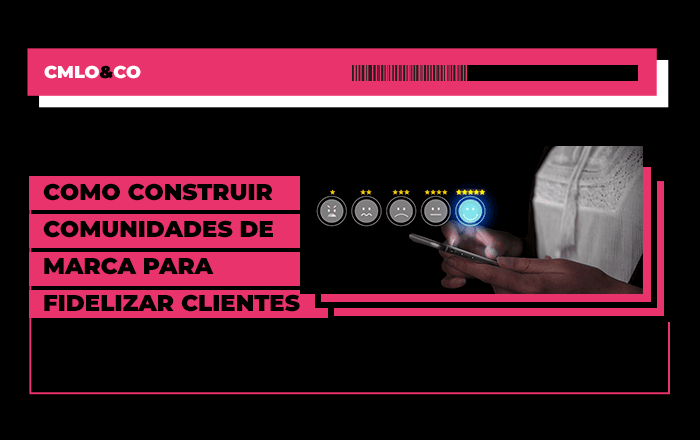In a world that is constantly changing, brands have to keep up to date in order to remain relevant. It's like revamping the look of your bedroom to feel more at home or changing your clothes to adapt to a new season. Just like us, brands also need a makeover from time to time. And that's exactly where rebrandingor brand repositioning.
Imagine your brand as a person: it can grow, change its style, or even adopt new passions over time. Repositioning is basically that: an opportunity for your brand to reinvent itself, showing the world its new personality in order to win new hearts.

In this article, we're going to talk about what rebranding is, when it's time to take this important step, why it's so vital and how a specialized agency can help in this process, making everything smoother and quieter for you and your company. Are you ready to embark on this journey of transformation and discovery? Then let's go!
What is rebranding?
Also known as brand revitalization, it is the act of reframing the image of a company or product. In other words, it's a planned strategy aimed at changing the public's perception of the brand.
Such actions may or may not involve changes to the name, logo, visual identity, colors, slogan, typography, mascot, positioning, value proposition and other elements.
Here it's worth explaining that a brand is much more than a pretty design or a name. In fact, it represents a set of values, promises and experiences that consumers associate with your company.
That's why it's important for it to be aligned with your purpose, mission and market vision. And this is precisely the purpose of rebranding: to make the brand more relevant, competitive and attractive to its target audience, giving them a new perception of the company, product or service.
When is it necessary?
There are several situations that can motivate rebranding, such as:
- Change in the company's mission, vision or values;
- Merger, acquisition or expansion of the business;
- Launching new products or services;
- Image or reputation crisis;
- Loss of relevance or competitiveness in the market;
- The need to differentiate yourself from competitors;
- Updating the visual identity;
- Desire to attract new audiences or segments;
- Adapting to trends or technological innovations.
Importance
Rebranding is not just about changing a brand's appearance. On the contrary!
It's also about conveying a new message, a new promise and a new experience to consumers. That's why it's so important. The process of redesigning and repositioning your brand can bring several benefits to your company, such as:
- Keeping the brand up to date, attractive and competitive in the market;
- Increase brand recognition and recall;
- Strengthen customer relationships and loyalty;
- Expand the reach and visibility of the brand;
- Improve communication and interaction with the public;
- Generate more value and credibility for the brand;
- Increase sales and profits.
Still not convinced about the importance and benefits of rebranding? Then why don't we take a look at Starbucks success story?
In 2011, the coffee chain changed its logo to a simpler, more modern design, eliminating the words "Starbucks Coffee" and leaving only the image of the mermaid.
The change reflected the company's expansion beyond coffee, offering other products and services such as teas, juices, food and entertainment. In addition, the simplified logo makes it easier to identify the brand in different countries and cultures.

Types
There are different types of rebranding, which vary according to the degree of change and the impact on the brand. The main ones are:
- Partial: this involves a more subtle change to the brand's identity, such as updating the logo, colors or slogan. This type of revitalization is indicated for cases in which the brand needs to modernize or adapt to new trends, but without losing its essence and recognition.
- Total: when all elements of the brand are changed, such as the name, logo, slogan, colors and positioning, with the aim of creating a new identity and personality. This type of rebranding is ideal for cases in which the brand needs to be completely reinvented, whether due to an image crisis, a change in target audience or market expansion.
- Evolutionary or restylling: when changes to the brand are made gradually and continuously, in line with changes in the market, consumers and the company's own growth. In this case, small adjustments are made to the logo, typography and other elements of the brand over time.
- Revolutionary: this is when the changes to the brand are made in a radical and disruptive way, so that the consumer can immediately perceive the changes.
Branding or rebranding?
In the world of marketing and advertising, these are two different concepts, but they are closely related. Shall we understand how?
Branding is the process of creating and managing a brand's identity, which involves everything from defining the name, logo, colors and slogan to communication strategies, positioning and customer loyalty.
Rebranding, on the other hand, refers to the process of reformulating the brand's identity, which involves changing some or all of the elements that make up the branding.
In other words, brand repositioning is nothing more than a stage in branding. It can be done at any point in a brand's trajectory, whether it's when it needs to renew itself or reposition itself in the market.
Why reposition your brand?
Brand repositioning is important to maintain the company's relevance in an ever-changing market.
After all, it allows companies to adapt to new trends, consumer demands and competition, ensuring that they stay ahead of the curve and continue to attract and retain customers.
However, brand repositioning may be necessary for a number of other reasons:
Increasing the company's share in its sector
If your brand is losing ground to competitors or if your market is saturated, repositioning your brand can be an excellent strategy to stand out and attract more customers.
Keeping up with market changes
Rebranding also keeps the brand up to date and relevant in a market that is constantly changing, whether due to new technologies, habits or consumer demands.
Correcting a negative image
If your brand has suffered any damage to its reputation, whether due to a mistake, a crisis or poor communication, you may need to reposition your brand to regain consumer confidence and show that you have evolved.
Align the image with reality
Internal changes such as a merger, an acquisition or a change in the company's mission or vision can also require rebranding. In this way, it is possible to reflect this new reality and convey coherence to consumers.
How do you rebrand your brand and make the transition smoothly?
Revitalizing a brand is no simple task. You need to plan each step well and rely on qualified professionals to carry out the changes. Here are some tips on how to rebrand your company and make the transition a smooth one:
Make a diagnosis of your current situation
Before making any changes to your brand, you need to understand what your problem is and what your objective is.
To do this, carry out a SWOT analysis of your brand, identifying its strengths, weaknesses, opportunities and threats.
Also, make a research with your customers, employees and partners to find out what their perception of your brand is and what their expectations are.
Define your new positioning
After understanding your current scenario, you need to define your new positioning.
To do this, think about what your unique value proposition is, what your competitive differential is and who your target audience is.
Also, define your brand's tone of voice, the personality you want to convey and the values you want to communicate.
Create your new visual identity
Based on your new positioning, create your new visual identity. This includes choosing a new name (if applicable), a new logo, new colors, new fonts and a new slogan.
Remember, however, that your visual identity must be consistent with your new mission, vision, values, personality and value proposition.
For this, you can count on the help of a branding company, which will professionally develop your new name, logo, colors, typography, slogan, tone of voice and other elements of your brand.
Communicate your change internally and externally
New identity ready, it's time to communicate the changes to your employees, customers, suppliers, partners and other stakeholders.
To do this, you can create an integrated communication strategy involving different channels and media, such as email marketing, social networks, website, blog, press, events and others.
Ideally, you should explain the reasons and benefits of your rebranding and show how it will add value for your audience.
Monitor the results of your rebranding
Last but not least, you need to monitor the results of the brand repositioning and assess whether it has achieved the expected objectives.
To do this, you can use performance indicators such as awareness, recall, preference, satisfaction, loyalty, advocacy and others.
What's more, you can collect feedback from your audience and make adjustments to your image if necessary.
In short, rebranding is a powerful tool for maintaining a brand's relevance and competitiveness in an ever-changing market. However, making this transition smoothly and effectively can be a challenge for most companies.
That's why having the support of a branding agency can make all the difference to the success of your project. After all, a professional partnership can offer all the support you need to plan, execute and monitor your rebranding, from the creation of your new identity to the dissemination of your new image.
If you're thinking of repositioning your brand and want to rely on a branding agency who has experience in the field, get to know CMLO&CO. Our strategic insights, creative solutions and powerful resources will ensure that the transition between your brand changes is smooth and successful, and that you achieve your business goals. Talk to our marketing and advertising experts.







